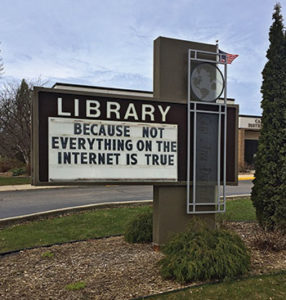 BuzzFeed reports that, on Facebook, the top 20 click-bait-y fake news stories generated more engagement than the top 20 real news stories did in the past three months.
BuzzFeed reports that, on Facebook, the top 20 click-bait-y fake news stories generated more engagement than the top 20 real news stories did in the past three months.
That’s okay if you know that what you’re looking at is fake and you’re just clicking or sharing something to get a good eye roll workout. But a new study by Stanford University says that the “digital natives” amongst us – kids from middle school through college – can’t tell the difference between sponsored content and real news.
And regarding their habits on social media, the Wall Street Journal reported that “[m]any students judged the credibility of newsy tweets based on how much detail they contained or whether a large photo was attached, rather than on the source.”
Think about that – credibility is judged on whether or not there’s a pretty picture.
That’s really worrying, especially because it’s not just kids that are making that mis-judgment. The Pew Research Center reports that 66% of Facebook users get their news there, and overall nearly 40% of us get our news online now.
Facebook is just a social networking site. It’s not a news site…right?
It’s inappropriate for anyone to like an article about someone getting shot. In the case of the shooting of Michael Brown in Ferguson, MO, research shows that stories on his death went into a cone of silence on Facebook, partly because it was inappropriate to ‘Like’ (for which read: share) and harder still (for non-trolls) to comment on. So when it comes to what gets shared more, the algorithms favor the Pope endorsing Donald Trump over what’s happening in Ferguson or Flint because of Likes.
It makes sense logically. But if 66% of people on Facebook (and let’s face it, Facebook’s market penetration is colossal) – if 66% of Facebook users are getting their news there, it’s well on its way to becoming a media company. A news distributor. Far and away from simply a social networking site. [Read more…]
